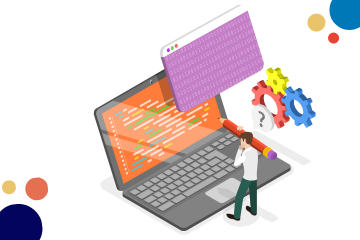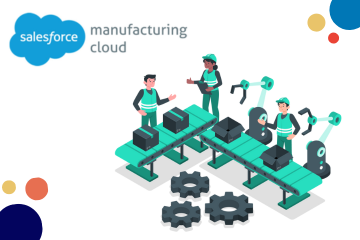Data-driven decision-making has become a cornerstone of success for various industries in today's digital age, including education. Educational institutions face numerous challenges in ensuring student success, optimizing resource allocation, and enhancing overall institutional performance. Salesforce, a global leader in customer relationship management (CRM) solutions, has emerged as a transformative tool in shaping institutional strategy through data-driven education decisions.
This blog explores how Salesforce is revolutionizing education by empowering institutions to harness the power of data for strategic planning and improved student outcomes.
The Power of Data in Education
Data has the potential to revolutionize the education sector by providing insights that enable institutions to make informed decisions. Educational data encompasses various dimensions, such as student performance, engagement, retention rates, and demographic trends. Traditional methods of collecting and analyzing this data were often time-consuming and inefficient. However, with technological advancements and platforms like Salesforce, institutions can gather, process, and visualize data in real time, enabling quicker and more accurate decision-making.
Salesforce in Education
Salesforce, renowned for its CRM solutions in business, has extended its capabilities to the education sector. With Salesforce Education Cloud, institutions can integrate various data sources into a unified platform, such as student information systems, learning management systems, and communication platforms. This data consolidation empowers administrators, educators, and advisors to comprehensively view student interactions, academic progress, and engagement levels.
Salesforce Shapes Institutional Strategy in many ways, and there are 7 ways in which Salesforce must provide solutions.
1. Creating a Comprehensive Student Profile: Unveiling the Full Student Journey
Salesforce's ability to aggregate data from various sources creates a comprehensive profile for each student. This profile includes academic history, attendance records, engagement in extracurricular activities, and interactions with faculty and support services. This holistic view helps institutions understand students on a deeper level, enabling more personalized support and interventions. For instance, if a student's performance suddenly drops, advisors can quickly identify the issue and provide relevant assistance, fostering a more conducive learning environment.
2. Predictive Analytics:
By leveraging historical data and utilizing predictive analytics algorithms, Salesforce can identify patterns and trends that indicate a student's likelihood of success or potential to drop out. This information is invaluable for early intervention strategies. Institutions can proactively reach out to at-risk students, providing additional academic support, counseling, or resources to improve their chances of success. This approach not only boosts retention rates but also contributes to a more inclusive and supportive learning environment.
3. Engagement and Communication:
Effective communication plays a pivotal role in student success. Salesforce facilitates personalized communication based on student's preferences and needs. Advisors can send timely reminders about important deadlines, upcoming events, and academic progress reports. Faculty members can use the platform to engage with students, discuss coursework, and provide feedback. This level of tailored communication enhances student engagement, as students feel acknowledged and supported throughout their academic journey.
4. Resource Optimization:
Through data analysis, institutions can identify areas where resources are most needed and optimize their allocation accordingly. For instance, if data reveals a high demand for tutoring services in a particular subject, the institution can allocate more resources to that area. Conversely, if a resource is underutilized, adjustments can be made to ensure efficient resource allocation, ultimately improving the institution's overall operations.
5. Enhancing Curriculum Effectiveness with Data-Driven Insights:
Data-driven insights from Salesforce can guide curriculum development. By analyzing student performance data, institutions can identify which courses or subjects' students struggle with the most. This information informs curriculum adjustments, such as revising course content, introducing additional support resources, or modifying teaching methodologies to better cater to student needs. As a result, students receive a more relevant and effective education, enhancing their learning outcomes.
6. Performance Monitoring:
Salesforce allows institutions to track key performance metrics in real time. This includes factors like graduation rates, enrollment trends, and student satisfaction surveys. With readily accessible performance data, institutions can assess their progress toward goals, identify areas of excellence, and pinpoint aspects that require improvement. Continuous monitoring empowers institutions to make timely adjustments to their strategies, ensuring ongoing growth and improvement.
7. Alumni Engagement:
Alumni engagement fosters a strong institutional community and supports ongoing development. Salesforce helps institutions maintain a robust database of alumni information, including career achievements and contributions. This information enables targeted engagement efforts, such as networking events, mentorship programs, and fundraising initiatives. Institutions can enhance their reputation and attract prospective students and donors by staying connected with alumni and showcasing their accomplishments.
Conclusion
Salesforce is pivotal in shaping institutional strategy through data-driven education decisions. By providing a 360-degree view of students, offering predictive analytics, enhancing engagement and communication, optimizing resource allocation, informing curriculum development, facilitating performance monitoring, and strengthening alumni relationships, Salesforce empowers educational institutions to make informed decisions that positively impact student success, institutional effectiveness, and overall growth.







Comments